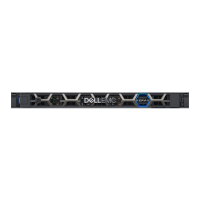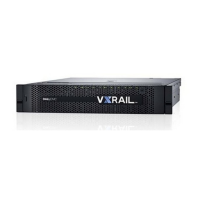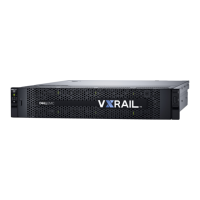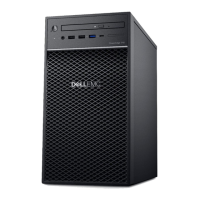5 | Network Planning Guide
© 2018 Dell Inc. or its subsidiaries
Planning Your Data Center Network for VxRail
The network considerations for VxRail are no different from those of any enterprise IT infrastructure: availability, performance,
and extensibility. VxRail Appliances are delivered to your data center ready for deployment. The nodes in the appliance can attach
to any compatible network infrastructure at 10 or 25GbE speeds with either RJ45 or SFP+ ports. Some models with single
processors can attach to compatible 1GbE network infrastructure. Most production VxRail network topologies use dual top-of-the-
rack (ToR) switches to eliminate the switch as a single point of failure. This document will guide you through the key phases and
decision points for a successful VxRail implementation. The key phases are:
Step 1.
Select the VxRail hardware and physical network infrastructure that best aligns with your business and
operational objectives
Step 2.
Plan and prepare for VxRail implementation in your data center before product delivery
Step 3.
Set up the network switch infrastructure in your data center for VxRail before product delivery
Step 4.
Prepare for physical installation and VxRail initialization into the final product
NOTE:
Follow all of the guidance and decision point described in this document; otherwise, VxRail will not implement
properly, and it will not function correctly in the future. If you have separate teams for network and servers in your
data center, you will need to work together to design the network and configure the switch(es).
VxRail Hardware and the Physical Network Infrastructure
VxRail nodes connect to one or more network switches, with the final product forming a VxRail cluster. VxRail communicates with
the physical data center network through a virtual distributed switch deployed in the VxRail cluster. The virtual distributed switch
and physical network infrastructure integration provide connectivity for the virtual infrastructure, and to enable virtual network
traffic to pass through the physical switch infrastructure. In this relationship, the physical switch infrastructure serves as a
backplane, supporting network traffic between virtual machines in the cluster, and enabling virtual machine mobility and
resiliency. In addition, the physical network infrastructure enable I-O operations between the storage objects in the VxRail vSAN
datastore, and provides connectivity to applications and end users outside of the VxRail cluster
This section describes the physical components and selection criteria for a VxRail cluster:
• VxRail clusters, appliances and nodes
• Network switch
• Topology and connections
• Workstation/laptop
• Out-of-band management (optional)
VxRail Clusters, Appliances and Nodes
A VxRail appliance consists of a set of server nodes that are designed and engineered for VxRail. A VxRail physical node starts as a
standard Dell PowerEdge server. The Dell PowerEdge server next goes through a manufacturing process following VxRail product
engineering specifications to produce a VxRail node ready for customer shipment. A set of prepared VxRail nodes are prepared and
delivered to the customer site based on a purchase order. The set of VxRail nodes are delivered ready for data center installation
and connectivity into the data center network infrastructure. Once the data center installation and network connectivity is
complete, and the equipment is powered on, the VxRail management interface is used to perform the initialization process, which
forms the final product: a VxRail cluster.
A VxRail cluster starts with a minimum of 3 nodes and can scale to a maximum of 64 nodes. The selection of the VxRail nodes to
form a cluster is primarily driven by planned business use cases, and factors such as performance and capacity. Five series of
VxRail models are offered, each targeting specific objectives:

